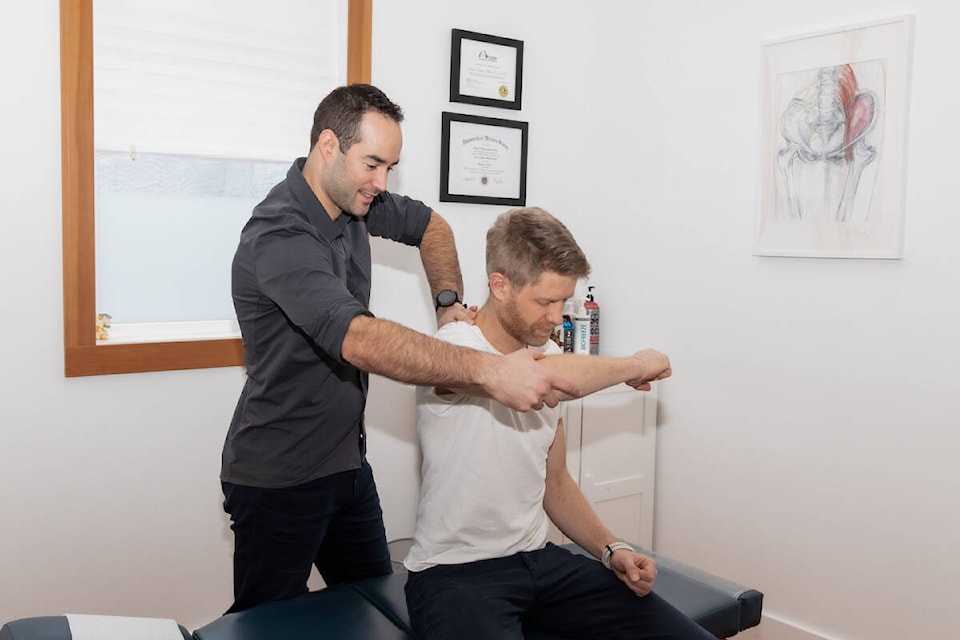Your shoulders are the most movable joints in your body, but because mobility requires proper stability, they can be easily injured.
“Two of the most common shoulder injuries that we assess and treat in the clinic are rotator cuff strains – which sometimes manifest as impingement syndromes – and thoracic outlet syndrome,” says Dr. Simon Condé, of Fit Chiropractic & Sport Therapy in Courtenay.
The rotator cuff is a group of muscles involved with the movement and stability of the shoulder. These muscles can be injured due to chronic repetitive movements, or through incidents like slips, falls or sports injuries.
Thoracic outlet syndrome is most commonly caused by the muscles of the neck and shoulder pinching nerves as they exit the neck and travel down the arm.
“It can be thought of like a kink in a hose, stopping the flow of water,” Dr. Condé says. “A small pinch in the nerves affects the amount of nerve flow that you get down the arm, which can lead to pain, numbness, tingling, and sometimes weakness.”
When to seek treatment
For all types of shoulder injuries, early treatment leads to faster healing and better overall outcomes. Starting immediately, within the first week of an injury, stops the overuse process and slows aggravation of the surrounding areas.
“Treatments slowly ramp up as the pain decreases and the mobility of the shoulder increases,” Dr. Condé says. “In general, injury to a bone is healed within eight weeks, and any soft-tissue injury like muscles, tendons, and ligaments heals within 12 weeks. If the problem persists beyond 12 weeks, there are underlying factors that need to be addressed before full recovery can occur.”

Common treatments
A good general rule to follow in the earliest stages of any injury treatment is PRICE: Protect, Rest, Ice, Compression, Elevation.
“As the injury starts to recover – usually within the first week – additional therapies can be employed to speed healing and recovery,” Dr. Condé says. “Muscle release techniques, like Active Release Therapy, stretching, protective exercises and joint mobility treatments promote proper range of motion, increased blood flow, and train your brain to move in protective motions. As treatment progresses there’s greater emphasis on at-home exercise and stretching routines, in order to decrease the likelihood of reaggravation.”
Lifestyle choices
In general, a healthy exercise program tailored to your injury and current abilities is important to maintain a healthy lifestyle and decrease the risk of reaggravation of the previous injury.
“‘Motion is lotion’ – keeping the blood flowing with exercise is important in healing and keeping the muscles loose and functioning properly,” Dr. Condé says. “Modifying activity is also very important during the treatment process as well as for the future. In all cases, figuring out what caused the injury and how to modify that activity so that it doesn’t keep reoccurring, is a must.”
Dr. Condé emphasizes that it’s important to always seek professional advice for any pain in the neck or shoulder, as well as pain, numbness, tingling or weakness in the arms, as it could be a sign of a more serious injury.
To make an appointment contact the team at info@fithealth.ca, and learn more by following Fit Chiropractic & Sport Therapy on Facebook and Instagram.
